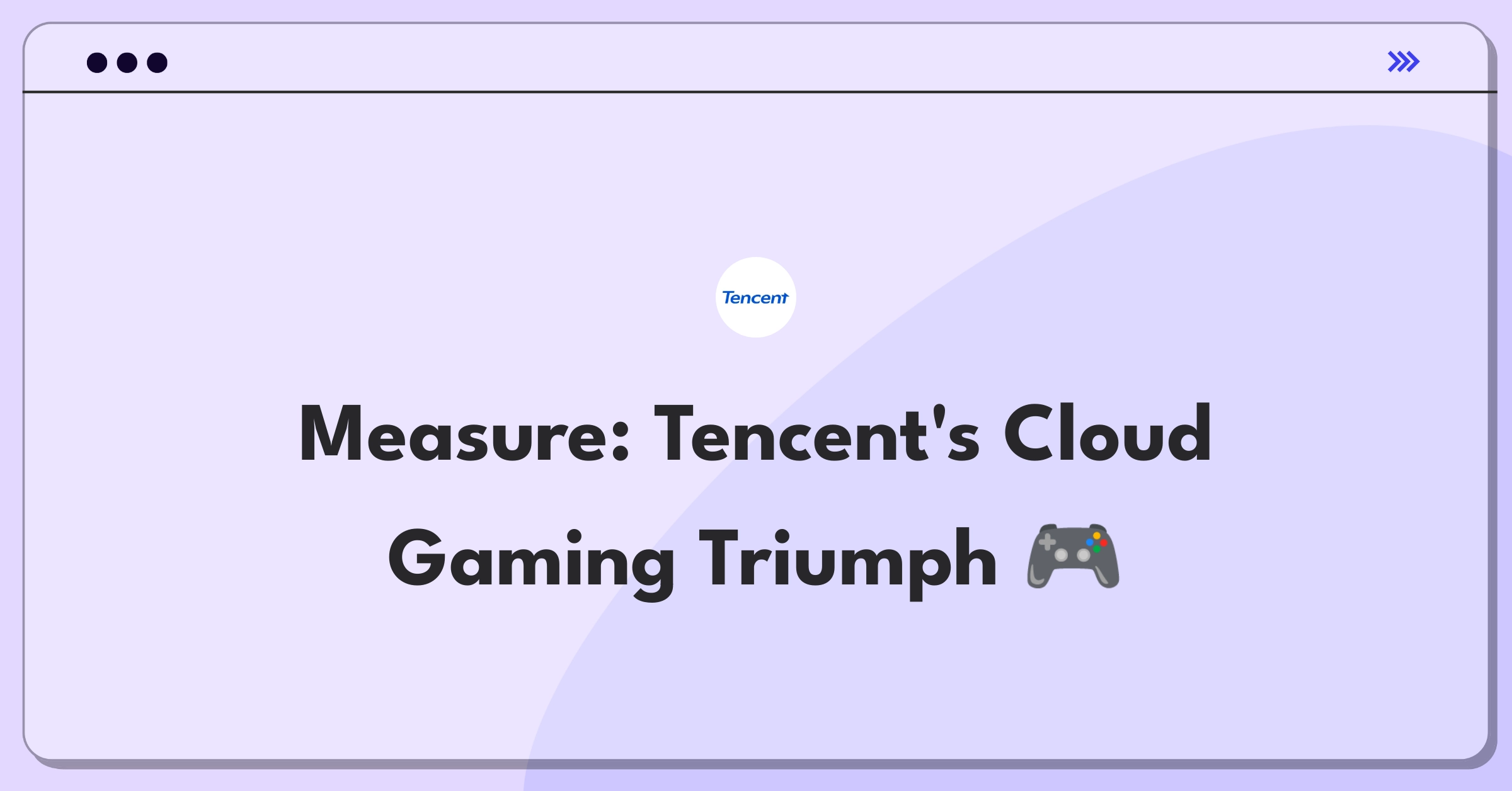Introduction
Defining the success of Tencent's cloud gaming service requires a comprehensive approach that considers multiple stakeholders and metrics. To address this product success metrics challenge effectively, I'll follow a structured framework covering core metrics, supporting indicators, and risk factors while considering all key stakeholders.
Framework Overview
I'll follow a simple success metrics framework covering product context, success metrics hierarchy.
Step 1
Product Context
Tencent's cloud gaming service allows users to stream and play high-quality games on various devices without the need for powerful hardware. Key stakeholders include gamers (primary users), game developers, hardware manufacturers, and Tencent shareholders.
User flow typically involves:
- Signing up for the service
- Browsing available games
- Selecting and instantly playing a game
- Saving progress and switching devices seamlessly
This service aligns with Tencent's strategy to dominate the gaming market and expand its ecosystem. Competitors include Google Stadia and NVIDIA GeForce Now, but Tencent's strong presence in the Asian market gives it a unique advantage.
The product is in the growth stage, rapidly expanding its user base and game library while continuously improving infrastructure and reducing latency.
Software considerations:
- Platform compatibility across devices
- Integration with Tencent's existing gaming ecosystem
- Deployment model balancing centralized and edge computing
Subscribe to access the full answer
Monthly Plan
The perfect plan for PMs who are in the final leg of their interview preparation
$99 /month
- Access to 8,000+ PM Questions
- 10 AI resume reviews credits
- Access to company guides
- Basic email support
- Access to community Q&A
Yearly Plan
The ultimate plan for aspiring PMs, SPMs and those preparing for big-tech
$99 $33 /month
- Everything in monthly plan
- Priority queue for AI resume review
- Monthly/Weekly newsletters
- Access to premium features
- Priority response to requested question


.png)